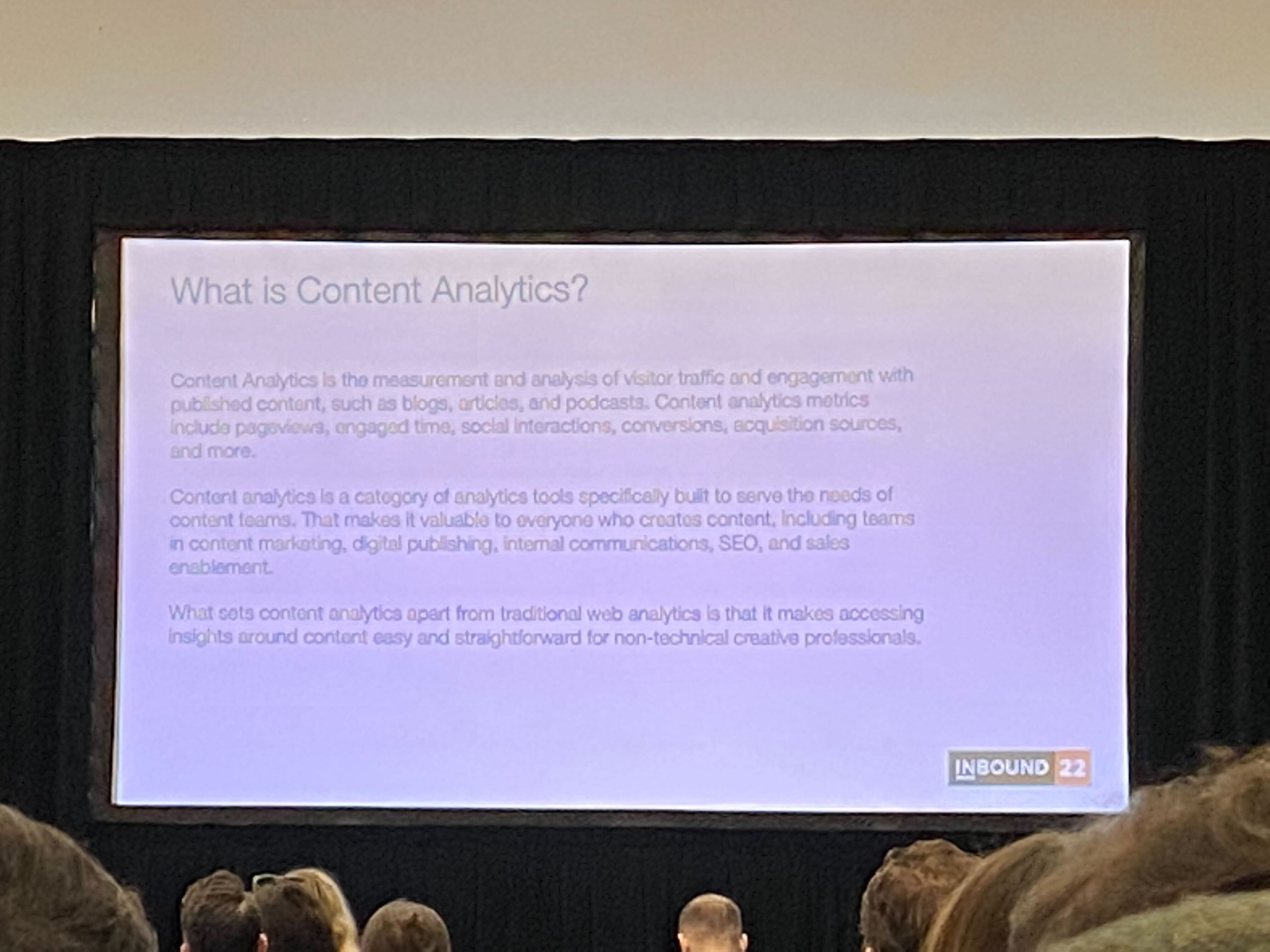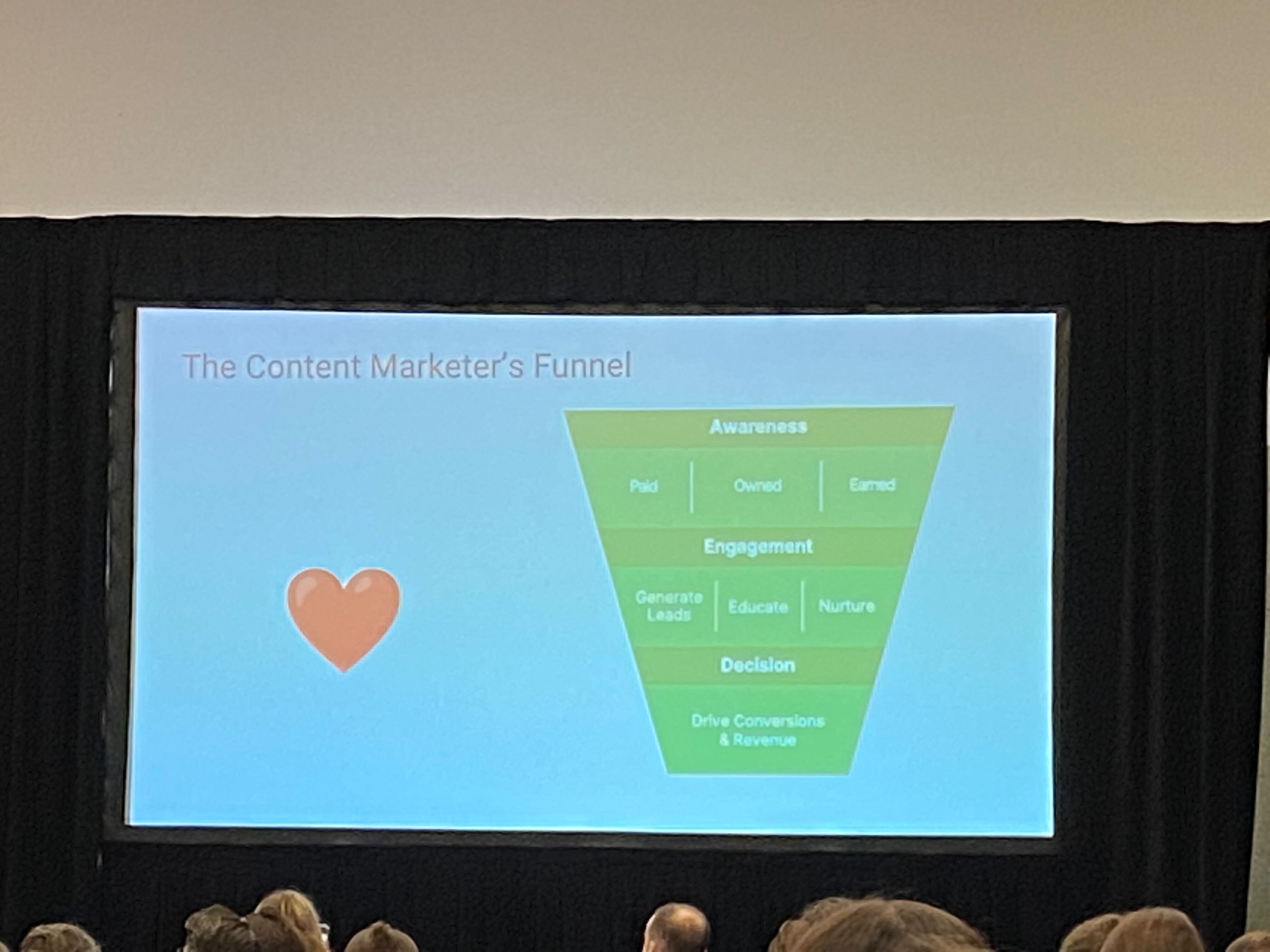
LIVE FROM #INBOUND22
How do we build content that drives future decisions? Stephanie Schwartz, Manager of Strategy And Education at Parse.ly, and David Cardiel, VP of Marketing at WordPress VIP aimed to answer this question in their talk on Day 3 of INBOUND22.
Content analytics has a reputation for being difficult but it doesn’t have to be! The problem is that hard-to-use analytics tools and vanity metrics only tell part of the story.
But if more and more businesses are realizing the power of content marketing to drive business, then why are we in a position where they’re still unsure how to accurately measure the results of their efforts?
Humanizing Content Is Building Content That Drives Decisions
Content is created based on the marketing plan or keyword research, perhaps it is even content created years ago before you started at your business. But what’s important is that the stories your content is telling are engaging to your audience, and it stands the test of time. If it is for a short-term campaign it should be something that resonates with the target audience.
This idea that stories drive decisions is something that is backed by research, a Harvard study showed that 95% of purchasing decisions are made by the subconscious. So engaging with your audience with a narrative that relates to them in an interesting way pays off with sales and purchases.
But the issue content marketers face is that being able to report on this and therefore make it a replicable process is a challenge. The Content Matters Report 2022 actually showed that 51% of marketers interviewed track metrics and understand how their content is performing, this needs to change.
What is Content Analytics?

Goals of Content
The first thing to consider when creating your content is what are you trying to achieve with the work you’re creating. Some examples of goals you might set are brand awareness, conversions, lead generation, or even direct sales.
If you’re able to utilise advanced content analytics then you can tailor your definitions of success based on multiple metrics. And you’ll even be able to experiment, track and update your content based on the data you see.
Content Marketers Funnel

The first step is to capture the attention of your audience in the awareness stage. Then you engage with them on a deeper level. Next, the aim is to push for a purchase, or whatever it is that you define as the bottom of the funnel. But how do you use content to do this?
If you have accurate and meaningful data then you can identify your high-performing content and prove its value. The insight from this then means you can adjust your content efforts to improve the effectiveness of your campaigns.
Defining Content
There is a huge variety of digital content available for you to produce. There are the typical ones we think of such as blogs, video, audio, etc but it is also content that we may not initially consider such as your website copy or help documents.
Your content can even be hosted on external platforms e.g YouTube, Spotify, and Media Sites. Different groups will have different ways of engaging with your business so you need different types of content at different stages for each of these groups.
There may be some overlap across platforms and topics but the subtle differences can be exposed and taken advantage of using content analytics.
Application of the Process
The first step in Stephanie and David’s process is to find out which of your content pieces leads to the most or highest value conversions. After you’ve done this you can then create further content on this topic.
This may be more in-depth pieces, it might be that you adapt your existing content into different formats. But the important thing is that your data shows you that this content is currently working for you and your audience.
You may even find it is unexpected pieces of content that are actually leading to your business's success. This key insight is the difference between building your content strategy based on your truly impactful content vs building it around the content that has good vanity metrics.
3 Steps to Building a Content Strategy
- Understand your Audience
- Inform your Strategy
- Focus on Value Creation
Conclusion
This session helped me to understand in greater detail an area of marketing I’m truly passionate about. Data-driven marketers need to be able to make better decisions about what content to create and to understand its true business impact. They can pass on their findings to their creative and strategy teams so that content creation is based on the data that proves exactly which content will move the needle for their business.
